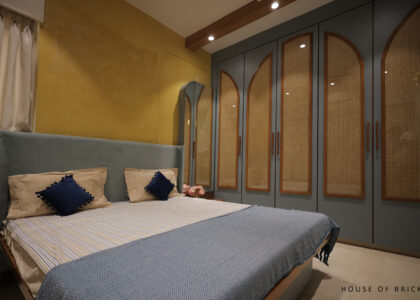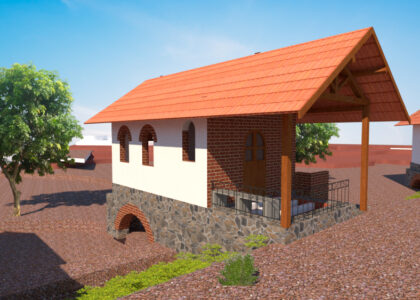The art of traditional exterior lime plastering is more than just a building technique—it’s a heritage craft that blends science, sustainability, and timeless beauty. For centuries, Indian homes, palaces, and temples have showcased walls coated in lime plaster, prized for its durability, natural cooling, and elegant finish. Today, as eco-friendly architecture and classic design regain popularity, homeowners and architects are rediscovering the value of this ancient method.
In this detailed guide, we’ll explore the origins of exterior lime plaster, the step-by-step process of creating it, and why it remains an unmatched choice for modern Indian homes.
Understanding Traditional Exterior Lime Plaster
Lime plaster is a natural wall finish made by combining slaked lime, sand, and sometimes natural fibers or pigments. Unlike cement-based plasters, lime is breathable, flexible, and environmentally friendly. Its microscopic structure allows moisture to evaporate, reducing dampness and mold—a common issue in India’s varied climate.
Professional services such as Lime Plaster Service bring this time-honored technique to modern construction, ensuring a balance of craftsmanship and contemporary performance. Whether for heritage restoration or a new luxury home, lime plaster provides a finish that is both functional and beautiful.
Why Choose Lime Plaster for Exteriors?
Before diving into the making process, it’s important to understand why lime plaster is ideal for external walls.
- Durability
Lime plaster hardens gradually over time through a process called carbonation, where it absorbs carbon dioxide and turns back into limestone. This makes the surface exceptionally long-lasting. - Natural Cooling
Lime’s porous structure helps regulate indoor temperatures. If you want to know how lime plaster can keep your home cool, the secret lies in its ability to reflect heat and allow vapor movement, creating a naturally comfortable living space. - Eco-Friendly Properties
Lime production consumes less energy than cement, and its carbon absorption further reduces the material’s environmental footprint. - Aesthetic Flexibility
From rustic textures to polished elegance, lime plaster offers design versatility unmatched by modern materials.
Step-by-Step: Crafting Traditional Exterior Lime Plaster
Creating lime plaster is a patient, multi-stage process that demands precision and experience. Below is a detailed look at each phase.
1. Sourcing and Preparing Raw Materials
The journey begins with the careful selection of materials:
- Quicklime: Obtained by burning limestone or seashells.
- Sand: Clean, well-graded river sand provides strength and texture.
- Natural Additives: Organic fibers, jaggery, or herbal solutions are sometimes added for extra durability and workability.
The quality of these ingredients directly influences the plaster’s performance. Artisans often rely on trusted local sources to maintain consistency.
2. Slaking the Lime
Quicklime is reactive and must be “slaked” before use. This involves adding water slowly to quicklime, causing an exothermic reaction that converts it into lime putty. The putty is then left to mature for at least 15 days—and often several months—to improve its plasticity and strength.
This stage is crucial. Properly matured lime ensures a smooth application and a finish that hardens evenly over time.
3. Mixing the Plaster
The matured lime putty is blended with clean sand in ratios depending on the desired texture and strength. Traditional artisans mix by hand or with slow mechanical mixers to avoid trapping excess air. In some regions, natural additives like gum or plant extracts are incorporated for extra bonding.
The goal is a creamy, workable mix that can adhere well to walls and withstand harsh weather conditions.
4. Preparing the Surface
A well-prepared wall surface is key to longevity. The masonry must be cleaned of dust, oil, or loose particles. For exteriors, the wall is often dampened slightly to prevent the plaster from drying too quickly. This moisture balance allows the lime to set naturally without cracking.
5. Layer-by-Layer Application
Traditional exterior lime plaster is usually applied in two or three coats:
- Scratch Coat: The first layer is applied roughly and scratched to create a strong mechanical bond.
- Brown Coat: A smoother second layer builds thickness and levels the surface.
- Finish Coat: The final layer, sometimes polished or burnished, gives the desired texture or sheen.
Between coats, each layer is allowed to partially set to ensure strength and prevent shrinkage cracks.
6. Curing and Carbonation
After application, the wall must be kept damp for several days to allow the plaster to slowly absorb carbon dioxide from the air—a process called carbonation. Over time, the lime hardens into a surface that’s essentially stone, resistant to weathering and capable of lasting for decades.
Decorative Possibilities with Lime
Lime plaster is not only functional but also artistic. One celebrated technique is Araish Plaster in India, a traditional Rajasthani method that produces a marble-like sheen. Perfect for exterior facades and heritage restorations, Araish creates a luxurious yet natural look that modern synthetic paints cannot match.
Lime Plaster in Modern Architectural Design
Today’s architects and interior designers are increasingly combining tradition with innovation. A professional Architectural Design Consultant can help integrate lime plaster into both heritage projects and contemporary villas, ensuring the design aligns with structural and aesthetic goals.
For high-end residences, selecting the right wall for luxury interior is critical. Lime plaster complements natural materials like wood, stone, and brass, offering a rich backdrop that elevates art, furniture, and lighting.
Lime Plaster vs Gypsum: A Relevant Comparison
Many homeowners also weigh lime plaster against gypsum plaster. While gypsum is quick to set and easy to work with, it is less breathable and less suitable for humid climates. For a deeper understanding, explore Lime Plaster VS Gypsum. For exterior walls, lime’s flexibility, weather resistance, and natural cooling properties usually make it the superior choice.
Maintenance and Longevity
Traditional exterior lime plaster requires minimal upkeep. Its self-healing properties mean small hairline cracks naturally close over time as the material continues to carbonate. Occasional gentle cleaning or limewashing can refresh the surface and enhance protection against the elements.
The Environmental Edge
Beyond beauty and durability, lime plaster is an eco-conscious choice:
- Lower Carbon Footprint: Lime production emits less CO₂ compared to cement.
- Carbon Absorption: As it cures, lime reabsorbs much of the CO₂ released during production.
- Natural Materials: Free from synthetic chemicals, lime plaster contributes to healthier indoor and outdoor air quality.
For homeowners seeking green building certifications or simply aiming to reduce their ecological impact, lime plaster is a clear winner.
Real-Life Applications Across India
From historic havelis in Rajasthan to modern coastal villas in Kerala, lime plaster continues to prove its versatility:
- Heritage Restorations: Lime’s compatibility with old masonry makes it indispensable in conserving India’s architectural legacy.
- Contemporary Luxury Homes: Architects in Mumbai, Delhi, and Bengaluru are embracing lime for its natural cooling and timeless elegance.
- Eco-Friendly Resorts: Boutique hotels and wellness retreats prefer lime plaster for its sustainability and serene aesthetic.
Conclusion: A Tradition Worth Preserving
The process of crafting traditional exterior lime plaster is an art that bridges the past and the present. From slaking quicklime to careful layer application and patient curing, every step reflects a deep respect for materials and the environment.
In an era where fast, synthetic finishes dominate, lime plaster stands out as a material of integrity—natural, breathable, and enduring. Whether you’re restoring a historic building or designing a contemporary dream home, embracing this ancient craft offers long-term benefits for beauty, comfort, and the planet.
For expert guidance and flawless application, explore Lime Plaster Service by House of Lime. By choosing lime, you’re not only investing in a durable exterior but also keeping alive a timeless architectural tradition.







